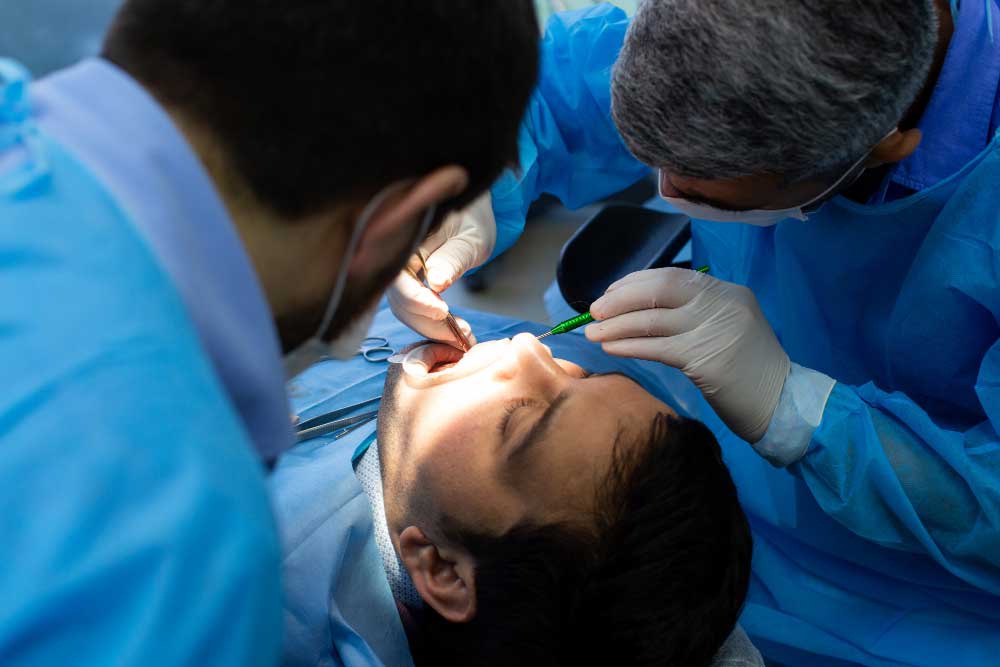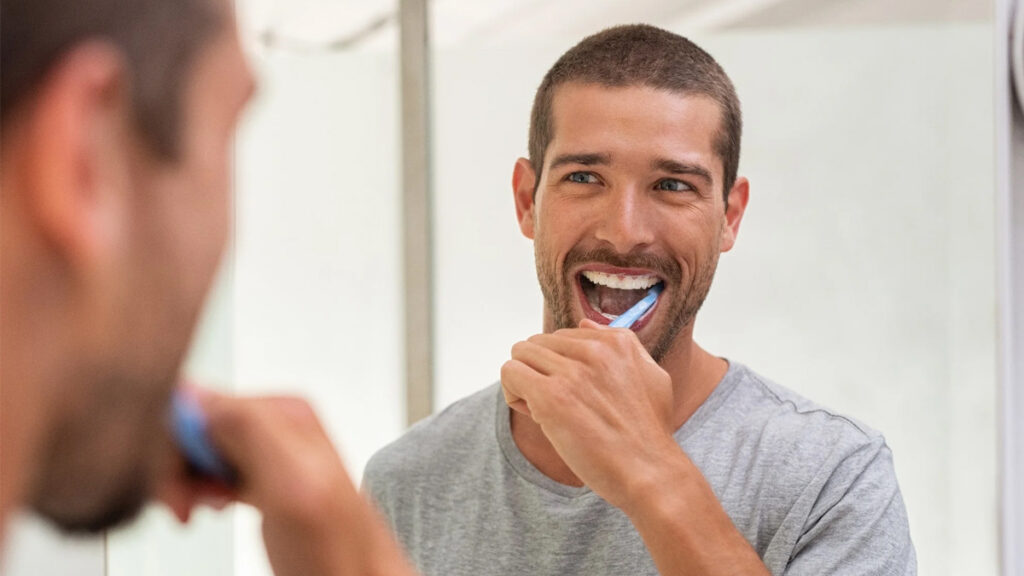Table of Contents
ToggleWisdom teeth removal is a common dental procedure that many people undergo, usually during their late teens or early twenties. While the procedure itself is generally straightforward, the care you take afterward is crucial to ensuring a smooth and speedy recovery. One of the key aspects of post-operative care is proper oral hygiene, particularly brushing your teeth. However, brushing after wisdom teeth removal requires a more delicate approach to avoid complications such as dry socket or infection. Here’s a comprehensive guide on how to properly brush your teeth following wisdom teeth removal.
1. Wait Before Brushing
Immediately after your wisdom teeth are removed, it’s essential to avoid brushing your teeth for at least 24 hours. During this time, your mouth needs to rest and begin the healing process. Brushing too soon can disrupt the formation of a protective blood clot at the extraction site, leading to a painful condition known as dry socket. Instead, during the first day, you should focus on keeping the area clean by gently rinsing your mouth with a saltwater solution (one teaspoon of salt dissolved in a cup of warm water) to help reduce swelling and promote healing.
2. Be Gentle Around the Surgical Site
After the initial 24-hour period, you can resume brushing your teeth, but you must be extremely gentle, especially around the surgical site. Use a soft-bristled toothbrush to avoid irritating the gums or the extraction area. When brushing, avoid the extraction sites as much as possible to prevent dislodging the blood clot. Otherwise, this would lead to more complications and increased wisdom teeth removal cost. Focus on cleaning the teeth farthest from the surgical area.
3. Use a Non-Alcoholic Mouthwash
While keeping the extraction site clean is vital, it’s important to avoid alcohol-based mouthwashes as they can cause irritation or dry out the surgical site, potentially leading to discomfort or infection. Instead, opt for a non-alcoholic mouthwash or continue using the saltwater rinse recommended for the first day. Rinse gently and avoid vigorous swishing, as this can also disrupt the healing process.
4. Avoid Using a Water Flosser
Water flossers can be a fantastic tool for maintaining oral hygiene, but they should be avoided immediately after wisdom teeth removal. The pressure from the water flosser can be too intense for the sensitive extraction sites and may dislodge the clot or irritate the area. Stick to traditional flossing methods but be cautious and avoid the surgical sites throughout wisdom teeth removal recovery.
5. Brush Twice Daily
Maintaining your regular brushing routine is essential, even after surgery. Brush your teeth twice a day to prevent plaque buildup and to keep your mouth clean. However, the focus should be on being gentle and cautious. Use slow, circular motions with your toothbrush and avoid the extraction sites to prevent complications.
6. Monitor for Signs of Infection
While brushing and caring for your mouth post-surgery, keep an eye out for any signs of infection. Symptoms to watch for include prolonged swelling, excessive pain, pus, or an unpleasant taste in your mouth. If you notice any of these symptoms, contact your dentist or oral surgeon immediately for advice and potential treatment.
7. Gradually Resume Normal Brushing
As the extraction sites begin to heal, you can slowly start incorporating the surgical areas into your brushing routine. Typically, after about a week, the healing process will have progressed enough for you to gently brush around the extraction sites. Always listen to your body and avoid any areas that still feel tender or sore.
8. Maintain Regular Dental Check-Ups
After wisdom teeth removal near me, ensure that you attend any follow-up appointments with your dentist or oral surgeon. They can assess how well your mouth is healing and provide personalized advice on when you can fully resume your normal oral hygiene routine.
Taking care of your oral hygiene after wisdom teeth removal is essential for a smooth recovery. By following these proper brushing techniques, you can help ensure that your mouth heals quickly and without complications, allowing you to get back to your regular routine with a healthy smile. If you’d like to know more about this procedure, talk to your dentist to know more about wisdom teeth removal price applicable to you.
Frequently Asked Questions
1. When can I start brushing my teeth after wisdom teeth removal?
You should wait at least 24 hours before resuming brushing after wisdom teeth removal. The first day is crucial for healing, and brushing too soon can disrupt the protective blood clot forming at the extraction site. This clot is vital for the healing process, as it protects the underlying bone and nerves. In the meantime, use a gentle saltwater rinse (1 teaspoon of salt in a cup of warm water) to keep your mouth clean and reduce swelling. After 24 hours, you can resume brushing but be extremely gentle around the extraction sites.
2. How should I brush my teeth after wisdom teeth removal?
When brushing your teeth after wisdom teeth removal, focus on being gentle, especially around the surgical area. Use a soft-bristled toothbrush to avoid irritating the gums or disturbing the extraction site. Brush in slow, circular motions and avoid applying too much pressure. Concentrate on the teeth farthest from the surgical area, gradually increasing brushing around the extraction sites as healing progresses. By being cautious, you reduce the risk of complications like dry socket or infection while keeping your mouth clean.
3. Can I use mouthwash after wisdom teeth removal?
Yes, but it’s essential to choose the right type of mouthwash. Avoid alcohol-based mouthwashes after wisdom teeth removal, as they can irritate the extraction sites and cause dryness, which can slow the healing process. Instead, opt for non-alcoholic mouthwashes or continue using a saltwater rinse for a few days. When rinsing, do so gently to avoid disturbing the blood clot that forms at the extraction site. Vigorous swishing can disrupt healing and lead to complications.
4. When can I start using a water flosser after wisdom teeth removal?
It’s best to avoid using a water flosser immediately after wisdom teeth removal, as the intense pressure of the water could dislodge the blood clot or irritate the sensitive surgical area. Stick to traditional flossing methods but avoid flossing near the extraction sites until they are fully healed, which usually takes about one to two weeks. After that, you can slowly reintroduce water flossing once your dentist gives you the green light.
5. How do I know if my extraction sites are healing properly?
Monitor your extraction sites for any signs of infection or complications. Typical healing symptoms include mild swelling and some discomfort, but these should gradually improve over the first few days. Watch out for signs of infection, such as persistent swelling, excessive pain, pus, or a foul taste in your mouth. If you notice any of these symptoms, contact your dentist or oral surgeon immediately for further evaluation. Additionally, your follow-up appointments will allow your dentist to assess the healing process and provide guidance on how to adjust your oral hygiene routine accordingly.




